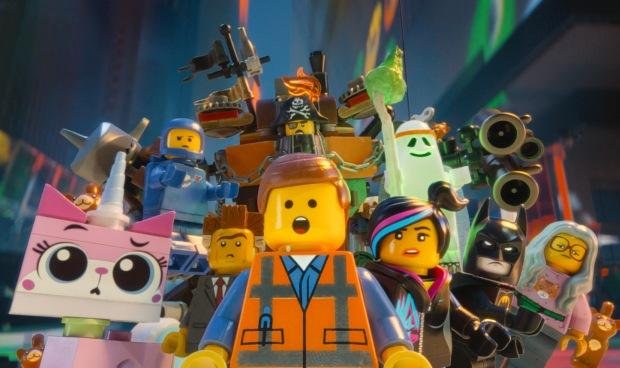I'm here to talk about one of the greatest libertarian movies of the last decade: The Lego Movie. That's right, you heard me.
The Lego Movie is one of the most pro-liberty mainstream films I've ever seen. Want proof? I'm glad you asked. I've got a bunch. But here there be spoilers, so continue at your own risk!
The movie follows construction worker Emmet, who knows nothing other than a life of following routines and instructions. Everything from his work orders to his own personal happiness is laid out for him in clean, easy-to-read instructions. All this changes when he finds a strange piece, unlike any Lego piece he's seen before. This artifact sets him on a whirlwind adventure where he ends up joining the cause of liberty and fighting the Lego world's tyrant, President Business.
I'm going to delve into three of the most significant liberty-themed elements in The Lego Movie.
1. The Villain, President Business

Some critics took The Lego Movie as an anti-capitalist diatribe because the villain's name is Business (I'm looking at you Fox News.)
It's pretty laughable that anyone could consider what's basically a 90 minute toy commercial to be anti-business.
Look at his name; it isn't just Business, it's President Business. He's a representative of both corporatism and government. President Business has a monopoly over everything, including violence. He's the head of their "democratic" government as well as the head of a corporation that provides security cameras, controls all media and publishes the history books.
The movie is criticizing fascism, not business.
2. The Anti-Border Message

This one will be controversial among libertarians and even with some anarchists (somehow...)
President Business keeps all of the worlds and cultures divided by tightly secured lines. He wants to keep people separate so that they can only function according to his plan.
He wants order, and order to a fault. He wants to limit the chaos of various personalities and the chaos of innovation. He hunts and kills or imprisons all the talented and resourceful master builders. He builds up borders between the different worlds and keeps them heavily guarded to prevent the free movement of individuals. He doesn't want their cultures and ideas mixing.
The more limited they are in their scope, the less likely they are to innovate beyond his capacity to control.
3. The Emphasis on Individuality

The movie begins with the main character Emmet literally from an instruction manual about how he can become a good member of society and achieve happiness. Governments only care about the former, but that first part is easier to achieve when citizens can be fooled into believing that they're content.
Emmet and all of the good members of society sing an endlessly catchy, but horribly collectivist pop song called Everything is Awesome!!! When the song first plays, Emmet is in the midst of going through his checklist of how to fit in; this includes always signaling a lane change when driving, rooting for the home sports team, and buying overpriced coffee from Starbucks.
This is the collectivist world we're introduced to, and it's the world that our heroes rebel against and save.
The Lego Movie teaches us that everyone is different and has something unique to contribute. That's what makes us special. That's what makes the world special. When we're held down by authoritarian central planning, the world will only ever see one vision and will miss out on the value of all the others.
The alarming trend toward tyranny can only be reversed when individuals find their inner hero and rise up and use their unique skills in the fight for liberty.
The Lego Batman Movie

Unfortunately, The Lego Batman Movie undid much of The Lego Movie's great work. In the sequel, we're taught that we must follow the law. If we take matters into our own hands instead of trusting the judgement of the police, the results could be catastrophic. Seriously, we could put the entire world in jeopardy!
Oh well. At least the first movie is still good. Thanks to The Mises Institute for their great article that inspired this post.
I hope I don't have to deal with a debate about borders in the comments...
~Seth
- I'm making a Hand-Painted Animation. Watch my first test.
- Reclaiming Art from the State.
- Anarcho-Memes Vol. 4. Now with a $5 SBD contest!
- I'm proud to announce that Steemit Explained will be Released in Spanish!
- Read about (and watch) my foray into Stop-Motion Animation.
- Watch my mock Infomercial for a Zombie Removal Service.

